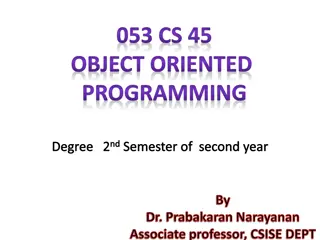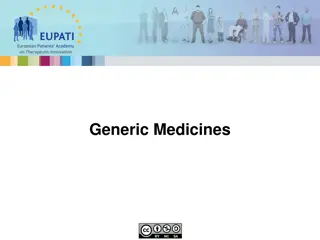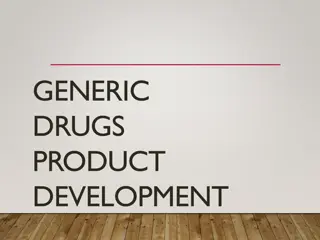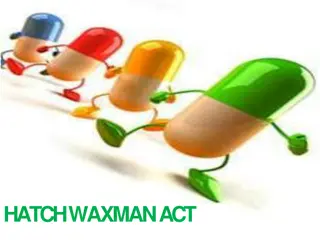
Contact Glue: Properties, Usage, and Precautions
Learn about Contact Glue, a versatile adhesive with fast and durable bonding capabilities. Discover its suitable applications, handy hints for optimal use, and essential health and safety precautions to follow during handling.
Download Presentation

Please find below an Image/Link to download the presentation.
The content on the website is provided AS IS for your information and personal use only. It may not be sold, licensed, or shared on other websites without obtaining consent from the author. If you encounter any issues during the download, it is possible that the publisher has removed the file from their server.
You are allowed to download the files provided on this website for personal or commercial use, subject to the condition that they are used lawfully. All files are the property of their respective owners.
The content on the website is provided AS IS for your information and personal use only. It may not be sold, licensed, or shared on other websites without obtaining consent from the author.
E N D
Presentation Transcript
Civil Technology Construction GRADE 11 TOPIC: JOINING (GENERIC) TERM 2 WORK
TOPIC: JOINING (GENERIC) CONTENT: Properties, use precautions and applications of the following: Contact glue PVC adhesives Silicone PVA-wood glue
1. Properties, use, precautions and application of the following adhesives: 1.1 Contact glue:
1.1 CONTACT GLUE: The ultimate general-purpose Contact Adhesive that is a toolbox essential. Offers fast, flexible and permanent bonding - one of the best bonding agents for durability. It can be used for bonding almost anything but is especially useful for non-porous materials (e.g. glass, metal, hard plastics) that other adhesives can t glue together. Genkem Contact Adhesive offers good brush ability for easy application in hard to reach places. In its wet form, it will stick to a variety of surfaces, and in its tacky to dry form, it will only stick to itself. Once adhered, it is nearly impossible to rip apart.
SUITABLE FOR USE ON: floor coverings, foam, canvas, leather, felt, cloth, linoleum, glass, metal, rubber, cork and some plastics. Wood, processed boards, masonite, plywood, veneer, decorative work and general DIY projects Ideal for hobby crafts, shoe repair, leather work, NOT SUITABLE FOR USE ON: Certain plastics such as polystyrenes and sheet vinyl
HANDY HINTS & TIPS: domestic iron after the veneers have been bonded. This will produce a smooth finish and ensure the best overall bond. Always stir Genkem Contact Adhesive well before use. Clamping bonded parts will always improve the bond. With thin or flexible substrates, place the bonded article between two sheets of wood, or metal thick enough to resist bending and then clamp these firmly together. If possible, leave it for 24 hours before attempting to use it. Check whether enough adhesive has been spread over the area, once the adhesive is dry, as it should have a glossy uniform. Genkem Contact Cleaner can be used to clean spills, tools and the removal of excess glue. For a professional finish to wood veneers, Iron it gently with a warm
HEALTH & SAFETY: hazardous. In case of accidental contact with eyes or skin, wash the affected are with plenty of water and seek medical advice This product is harmful if swallowed. Do not induce vomiting; call your local poison centre or doctor. Deliberate misuse by inhalation of any product containing solvents without adequate ventilation may cause eye watering, weakness, fatigue, nausea, headache or dizziness. Caution: This product contains ingredients that are
PVC adhesive: Working with PVC conduit and its fittings is easy and with the right technique, you can have a strong holding bond between the conduit and the fitting by using this great tip on how to glue with PVC glue. Unlike rigid metal conduit that has threaded fittings or EMT conduit that has setscrew fittings, PVC conduit has glued fittings that require some special twists and turns to make them secure and stay holding strong.
PVC adhesive: There are three plastic plumbing pipes that are put together with glue. They are ABS, PVC, and CPVC pipes. We don t really call it glue, but solvent-cement. None of the plumbing cements are interchangeable, each one is specific for its pipe. Each pipe is joined with its own cement. One exception is transition cement, used to weld ABS pipe and PVC pipe together. This transition cement is green in colour so it's easy to recognize. The other exception is all-purpose cement which can be used to join any of the three pipes to each other.
Silicone: Based on elastomeric technology, silicone adhesives offer unparalleled flexibility and exceptionally high heat resistance, making them suitable for a wide range of applications in the electrical, electronic, automotive, aerospace and construction industries. Silicone adhesives are available in varieties including two component systems that require the addition of a curing agent, one component systems that cure simply by the moisture in the air, UV or EB radiation curing adhesives that cure with exposure to a UV light or pressure sensitive versions that adhere to surfaces with very slight contact pressure.
Silicone: In general, users can count on silicone adhesives to produce bonds that can withstand high temperatures (in some cases up to 600 F), remain flexible even after curing and resist chemicals including water. With their ability to resist water and other chemicals, silicone systems are used for sealing gaskets and engines in the transportation industry. They are also used for potting and heat sink attachment in electronic applications.
PVA wood glue: PVA stands for Polyvinyl Acetate and it's a type of aliphatic resin that is also water based and is available for interior or exterior use but is also non toxic. This glue is now very popular and in many opinions it is the best timber adhesive available because it dries clear, it's very easy to apply and has super strong holding strength on wood. They can creep over time but a tight joint helps to prevent that. Because of its many great features Polyvinyl Acetate is excellent for bonding woodwork joints together or as a furniture and carpentry adhesive. Polyvinyl Acetates are very versatile and are relatively fast drying but excess glue must be wiped away after applying or it is very difficult to remove when dry. Polyvinyl Acetate glues are available in white and yellow and are relatively inexpensive compared to most glue, they also have a reasonably long shelf life. The white type is better for interior use because moisture weakens it over time and the yellow is better for outdoor use because it is water resistant but it doesn't dry completely clear.






















